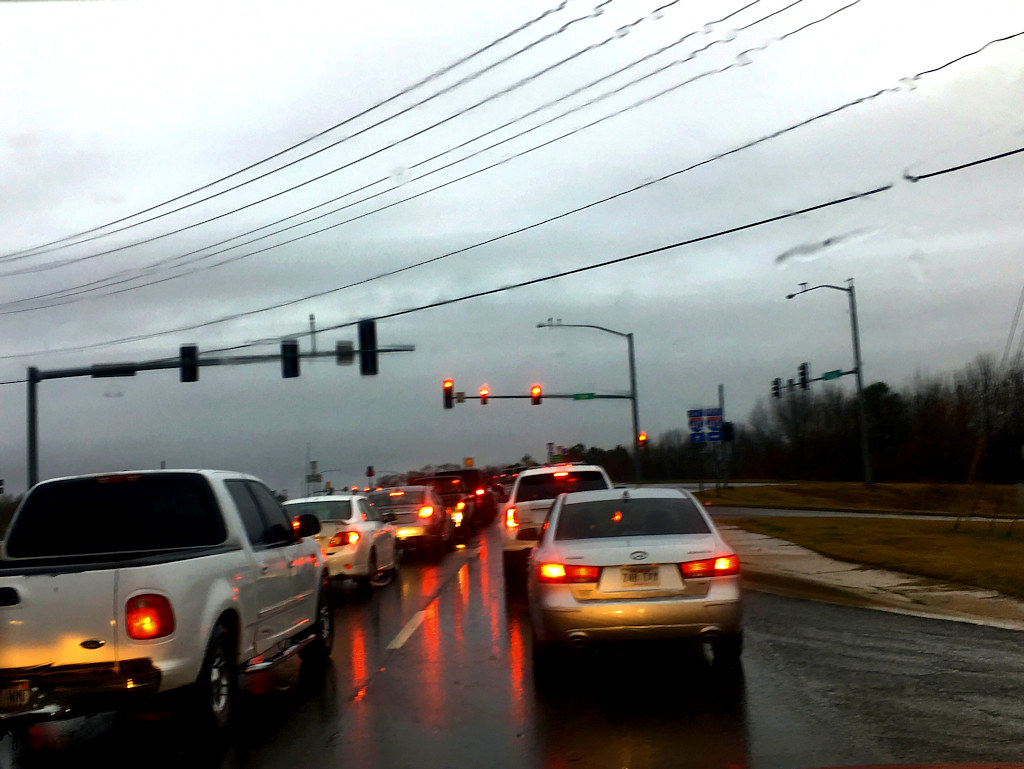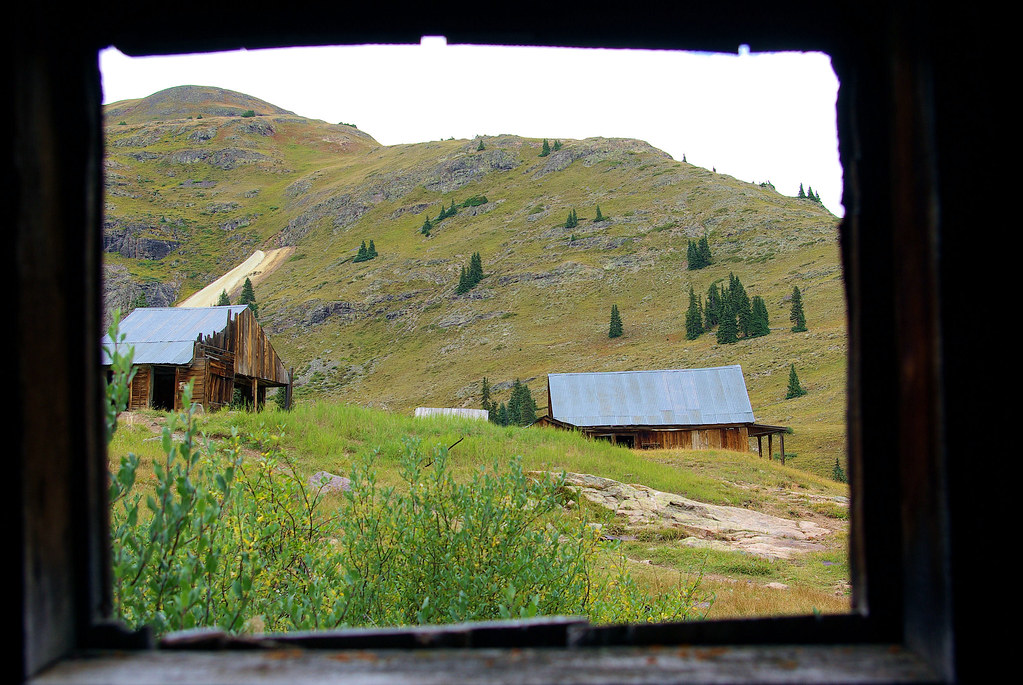Photography Now & Then #52
Even when I was working, I seldom was on the road when there was a lot of traffic – not that we ever have any serious traffic issues in this part of the country. The worst I’ve ever seen here is when some sort of accident snarls traffic on the interstate. The next worst is during outages on the road to the nuclear plant when there are a lot of workers heading to or leaving work.

Today’s photo[1]: Rush hour rain on AR-7 at I 40, Russellville, Arkansas, February 21, 2018 (Apple iPhone 6s)
We managed to get 4 inches of rain in the last 24 hours – 6 inches since Saturday – with more still to come. Needless to say, things are a bit soggy around here.
______________________________________
We’ve visited the ghost town of Animas Forks several times over the years.

Photo Favorite[2]: Room with a view – Animas Forks, Colorado, September 8, 2009 (Pentax K10D)
Animas Forks[3]
Situated at an elevation of 11,200 ft (3,414 m), Animas Forks is a ghost town located twelve miles (19 km) northeast of Silverton in San Juan County, Colorado, United States. The area is managed by the Bureau of Land Management.
The town’s first log cabin was built in 1873 and by 1876 the community had become a bustling mining community. At that time the town contained 30 cabins, a hotel, a general store, a saloon, and a post office. By 1883 450 people lived in Animas Forks and in 1882 a newspaper, the Animas Forks Pioneer, began publication and lasted until October 1886. Every fall the residents of Animas Forks migrated en masse to the warmer town of Silverton. In 1884 a 23-day blizzard inundated the town with 25 feet (7.6 m) of snow, the residents had to dig tunnels to get from building to building. Mining, speculation and processing mills helped Animas Forks grow.
Decline
When mining profits began to decline investment in Animas Forks was no longer justified. Although mining made a brief 1904 rebound with the construction of the Gold Prince Mill the town’s mining days were nearing an end. A rail line ran through the area and stimulated interest in mining in the community again but the railroad never reached its expectations. The Gold Prince Mill closed in 1910 and in 1917 most of the mill’s major parts were removed for a new facility in Eureka. The mill’s dismantling signaled the beginning of the end for Animas Forks. The town was a ghost town by the 1920s.
- Today’s Photo is a photo that is almost always taken the day of the blog post. In some instances, posts may be backdated if internet access is not available on the day of the photo or other reasons prevent posting Photograph Now and Then.
- Photo Favorite is a randomly selected older photograph from a batch of photos specifically “curated” for Photograph Now and Then.
- Animas Forks, Colorado –Wikipedia
Notes:
- Reference links were accessed on the date the blog post was published, unless otherwise stated.
- The title convention for Photography Now & Then blog posts evolved early on from one word related to each photo separated by “&” to usually being the first word in the caption description for each photo.

